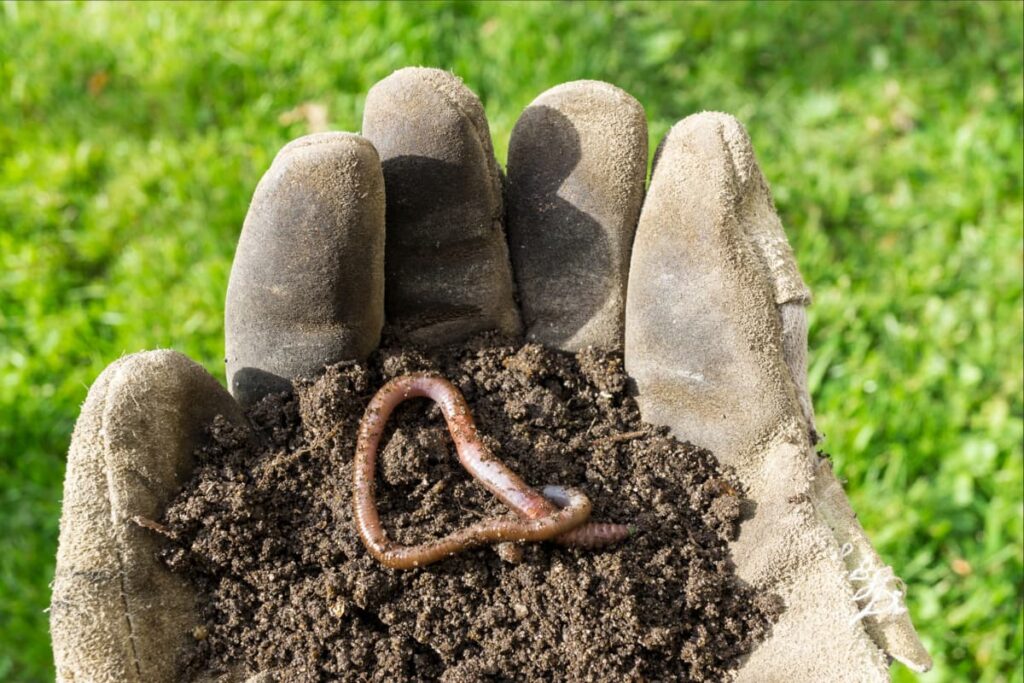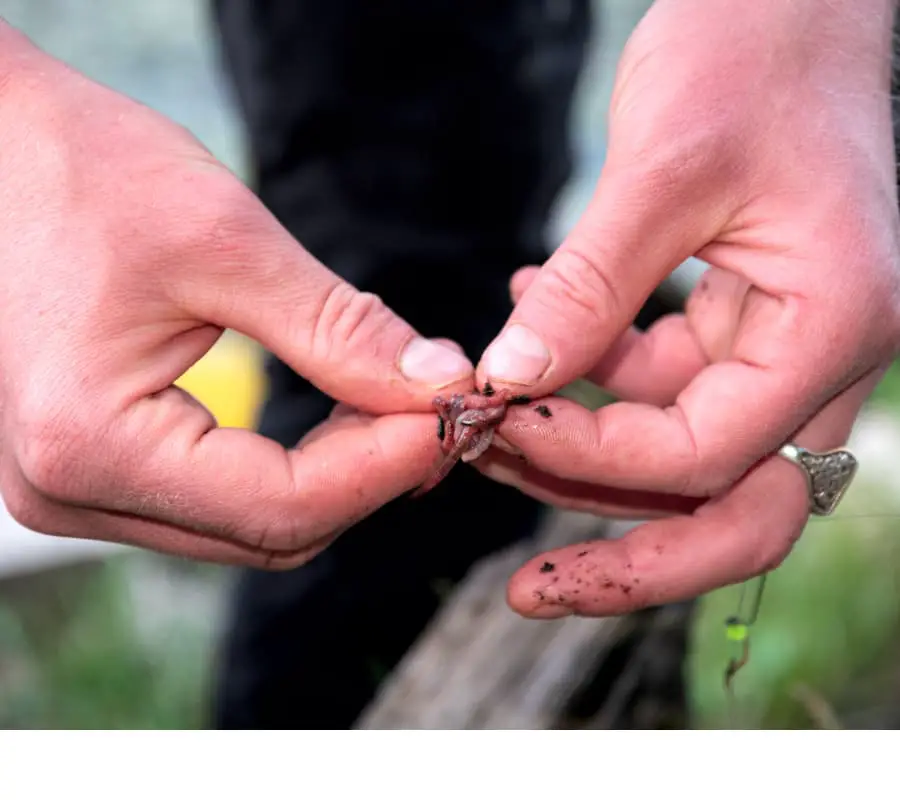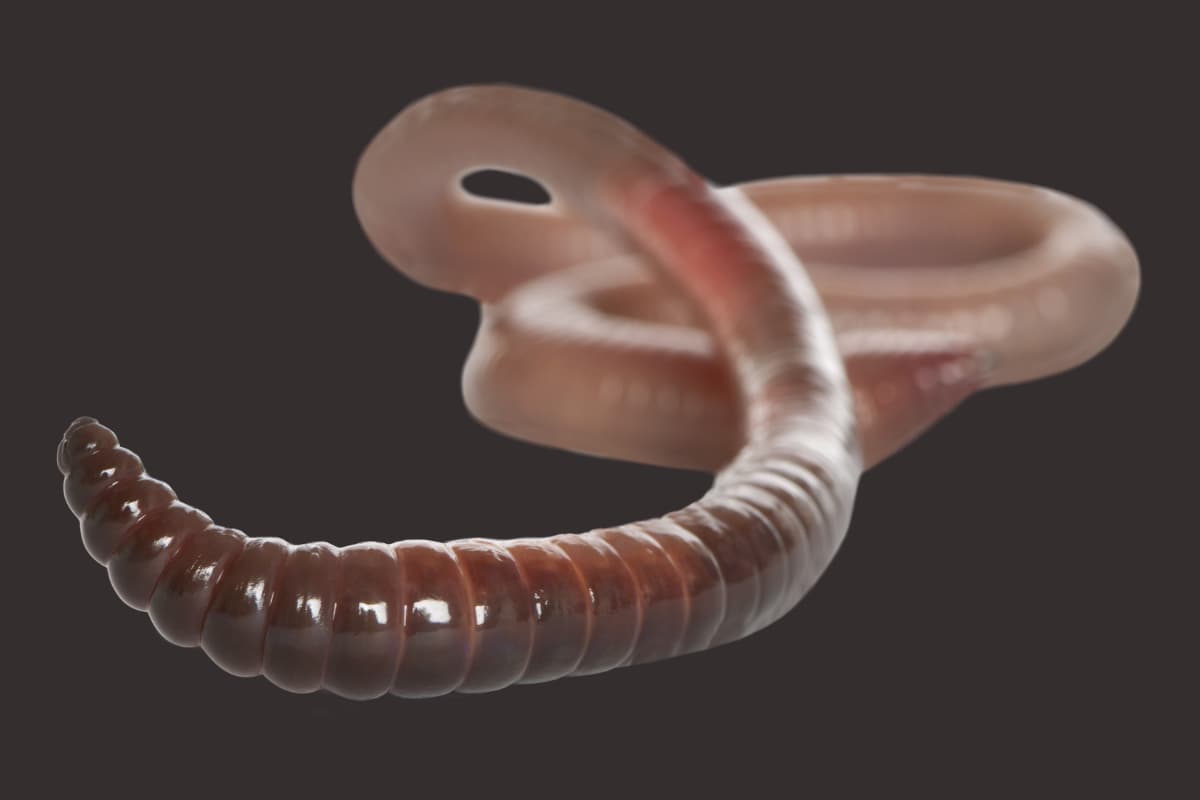Earthworms do not possess traditional hearts similar to those found in humans. However, they do have five pairs of aortic arches that serve a similar purpose.
These intriguing structures, often referred to as the “hearts” of worms, help circulate blood throughout the body. So, you could say that worms have ten aortic arches, or five pairs of arch-like hearts, depending on how you choose to define a heart.
Learning about these fascinating creatures and their unique circulatory systems gives us a greater appreciation of the diversity and complexity found within the animal kingdom. From this perspective, the simple earthworm proves to be far more interesting and complex than it initially appears.
Worm Anatomy and Physiology
Circulatory System and Aortic Arches
Earthworms possess a closed circulatory system, which includes blood vessels, capillaries, and a specialized structure called aortic arches. These arches function similarly to a heart and can be considered as five pairs or 10 single arches, depending on how you define a heart.
The blood in earthworms is rich in hemoglobin, which transports oxygen throughout the body via blood vessels. Blood glands in segments 4-6 help in the production of blood cells and hemoglobin.
Respiration and Oxygen Transfer
Unlike humans, earthworms don’t have lungs for oxygen exchange. Instead, they rely on their moist skin to facilitate the transfer of oxygen and carbon dioxide. The epidermis, which is covered by a thin cuticle, helps maintain this moisture.
Digestive System
The earthworm’s digestive system consists of several segments:
- The mouth, located at the beginning of the worm, is covered by the prostomium, a small lobe.
- The pharynx, where food is ingested and lubricated for easy movement through the esophagus.
- The crop, which temporarily stores ingested food.
- The gizzard, where ingested food is ground up and mixed with digestive enzymes.
- The intestine, where nutrients are absorbed into the bloodstream.
Each segment of the earthworm’s body contains sets of muscles that aid in movement, digestion, and waste expulsion.
Nervous System
The nervous system of an earthworm is relatively simple, consisting of a brain, ventral nerve cord, and subpharyngeal ganglia. The brain is located in the third body segment, while the ventral nerve cord runs the length of the worm’s body, connecting to the ganglia in each segment.
The worm’s entire body is covered with small, hair-like structures called setae, which help with movement and sensing the environment.
The clitellum, a thick, saddle-like structure found in mature earthworms, plays a significant role in reproduction. It is responsible for creating the cocoon that houses the earthworm’s eggs and sperm.

Multiple Hearts in Worms and Other Animals
Why Do Worms Have Multiple Hearts?
Worms, specifically earthworms, possess five pairs of aortic arches that serve as their hearts. These aortic arches are responsible for pumping blood throughout the worm’s body. Unlike vertebrates, worms are invertebrates, meaning they do not have a backbone.
Their anatomy is quite different, and their circulatory system relies on these aortic arches to perform a similar function to that of a traditional heart.
Pseudohearts and Accessory Pumps
The aortic arches in worms are often referred to as pseudohearts because they do not have multiple chambers like a vertebrate heart. Instead, they are single-chambered structures that help circulate blood throughout the worm’s body.
In addition to earthworms, other invertebrates like cephalopods (squid, octopuses, and cuttlefish) also have multiple hearts. In cephalopods, there are usually three hearts – one central heart pumping blood throughout the body and two additional smaller hearts, known as accessory pumps, responsible for pumping blood through the gills for oxygenation.
Key Differences Between Vertebrates and Invertebrates
- Vertebrates have a backbone, whereas invertebrates do not.
- Some invertebrates like worms and cephalopods have multiple hearts or pseudohearts.
- Vertebrate hearts are multi-chambered, while invertebrate hearts, like the pseudohearts in worms, are single-chambered.
Multiple Hearts in Other Animals
Apart from worms and cephalopods, hagfish, which are primitive jawless fish, have accessory pumps that are sometimes called additional hearts. These additional hearts help assist with circulation in these unique creatures.
It’s important to note that these multiple hearts or accessory pumps serve different functions in each animal’s anatomy, depending on their unique circulatory requirements. As a result, while some animals may have more than one heart, the structures and functions of these hearts can differ significantly.
Worms’ Role in Ecosystems
Soil Aeration and Nutrient Cycling
Earthworms play a crucial role in maintaining healthy ecosystems, especially when it comes to soil aeration and nutrient cycling. By moving through the soil, these creatures create spaces for air and water to circulate, which promotes aeration. This process is essential for the survival of other plants and animals, as it allows oxygen to reach the roots and microorganisms living in the ground.
In addition to improving soil structure, earthworms help break down organic matter, such as leaves and compost, into smaller particles. As they feed on this material, they produce humus, a nutrient-rich substance that supports plant growth. This process enhances the availability of nutrients like nitrogen, phosphorus, and potassium, which are vital for plants’ survival and growth.
Moreover, earthworms assist in retaining carbon within the soil by incorporating organic matter into deeper layers. This process reduces carbon dioxide emissions and supports a stable climate system.
Impact on Plant Growth
Worms, particularly earthworms, play a vital role in promoting the growth of plants. Through their constant movement, they create channels in the soil, which aids the roots in reaching further into the ground, accessing more water and nutrients. These passages also make it easier for plants to penetrate deeper into the earth.
By breaking down organic matter and producing humus, earthworms contribute to nutrient cycling and create fertile conditions for plants to flourish. This nutrient-rich environment provides an abundance of essential elements for plants to develop, grow, and reproduce, which promotes healthy ecosystems.
In conclusion, worms, especially earthworms, are vital in maintaining and promoting healthy ecosystems. Their role in soil aeration, nutrient cycling, and supporting plant growth is indispensable to the survival of countless organisms within their environment.
Worm Behavior and Defense Mechanisms
Avoiding Light and Predators
Worms, especially nightcrawlers, are known to avoid light and stay close to dark, moist environments. This behavior helps protect them from harmful light conditions and potential predators. Their sensitive skin detects even the slightest changes in their surroundings, allowing them to react promptly to dangers. They can sense light, vibrations, and air pressure changes through their skin, even in the absence of eyes.
Worms play a crucial role in plant growth by aerating the soil and providing nutrients through their castings. They prefer to remain hidden in their burrows during the day and come out at night to feed and mate. This pattern also helps them avoid humans and other animals that might cause harm.
Regenerating Segments
One of the most fascinating aspects of worm biology is their ability to regenerate segments. It’s true that worms don’t have teeth or a skeletal muscular system, but their simple yet efficient anatomy allows them to recover from injuries and defend against predators.
When a worm is injured and loses a segment of its body, it can regenerate that part in a short time. This remarkable defense mechanism helps them survive in a world filled with dangers, such as sharp rocks, small predators, and even human gardeners wielding shovels.
Although worms might appear to be simple creatures, their behavior and defense mechanisms demonstrate a surprising adaptability to their environment. They continue to contribute to the health of our soil and plant growth, all while avoiding harm and staying hidden in the dark, moist world below our feet.
Interesting Worm Facts and Types
Mating and Reproduction
Earthworms are hermaphrodites, meaning they possess both male and female reproductive organs.
Despite this, they still require another worm for mating and exchange of sperm to reproduce. Here are some more intriguing aspects of their reproduction process:
- Mating typically occurs at night or during periods of high humidity.
- During mating, two worms align their bodies with their heads pointing in opposite directions, and then exchange sperm through a mucus-covered area near their clitellum.
- After mating, a cocoon-like structure forms around the clitellum region, which eventually slides off the worm’s body containing fertilized eggs.
- The incubation period of earthworms varies depending on the species, but can range from several weeks to a few months.
Common Earthworm Varieties
There are over 6,000 species of worms within the class Oligochaeta, which includes earthworms. Here are some popular earthworm varieties:
- Lumbricus terrestris (Nightcrawler): This species is often used as bait for fishing, and can grow up to 10 inches long. Nightcrawlers are known for their reddish-brown color and strong muscular structure.
- Eisenia fetida (Red Wiggler): Commonly used in vermicomposting, these worms are highly efficient at breaking down organic material. They typically grow to be about 2-3 inches long, with reddish color and distinct bristles on their body for movement.
- Aporrectodea caliginosa (Grey Worm): Another popular variety used in composting, these worms are native to Europe and usually measure around 3-6 inches in length. Their color ranges from grey to light pink.
Although worms lack traditional eyes, ears, and nose, they possess other incredible physical features. Earthworms may have between 5 to 10 hearts, depending on the species, and are capable of regenerating certain parts of their bodies if injured. Despite lacking lungs, they can breathe through their skin, absorbing oxygen while they expel carbon dioxide. They are fascinating examples of invertebrates with unique adaptations to their natural environment.
Worms in Daily Life and Human Uses

Worms as Bait and Pet Food
Worms, particularly earthworms, are commonly used as bait for fishing. Anglers appreciate their wriggling motion, which attracts fish to the baited hook.
Additionally, worms serve as a natural food source for birds and other species in the wild. In captivity, some pet owners provide worms as a highly nutritious meal for their reptiles, birds, and amphibians.
Vermicomposting
Vermicomposting is the process of using worms, usually red wigglers, to break down organic waste material into nutrient-rich compost. This method has gained popularity among gardeners and farmers for its eco-friendly and efficient approach to recycling waste.
Worms digest the organic matter in the compost pile and produce worm castings, a highly fertile and nutrient-dense soil amendment. The use of worms in composting bolsters soil health, which in turn benefits plants and crops.
Worms in Culture and Literature
Worms have also found their way into various cultures and literature throughout history. They often symbolize transformation, fertility, and the cycle of life, as they play a vital role in breaking down organic matter and enriching the soil. The arrival of worms is often associated with the rejuvenating powers of spring, as they contribute to the growth of new life.
In literature, worms are frequently used as metaphors and allegories to convey deeper meanings. For instance, “The Worm” by William Blake and “The Conqueror Worm” by Edgar Allan Poe both use worms as symbols for decay and death, while in African folktales, Anansi the spider often interacts with worms in his quest for wisdom.
The various roles that worms play in our lives, from functional uses in fishing and gardening to their symbolic values in culture and literature, showcase their remarkable versatility and influence in daily life.


